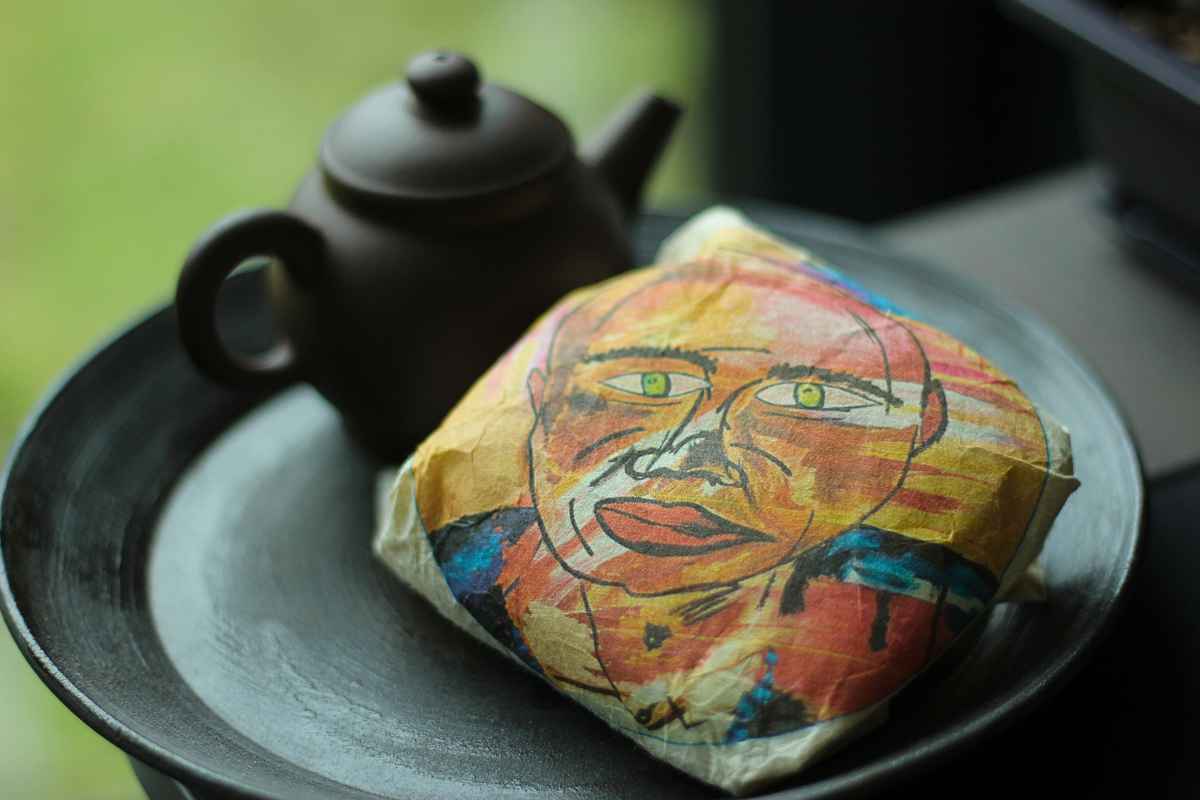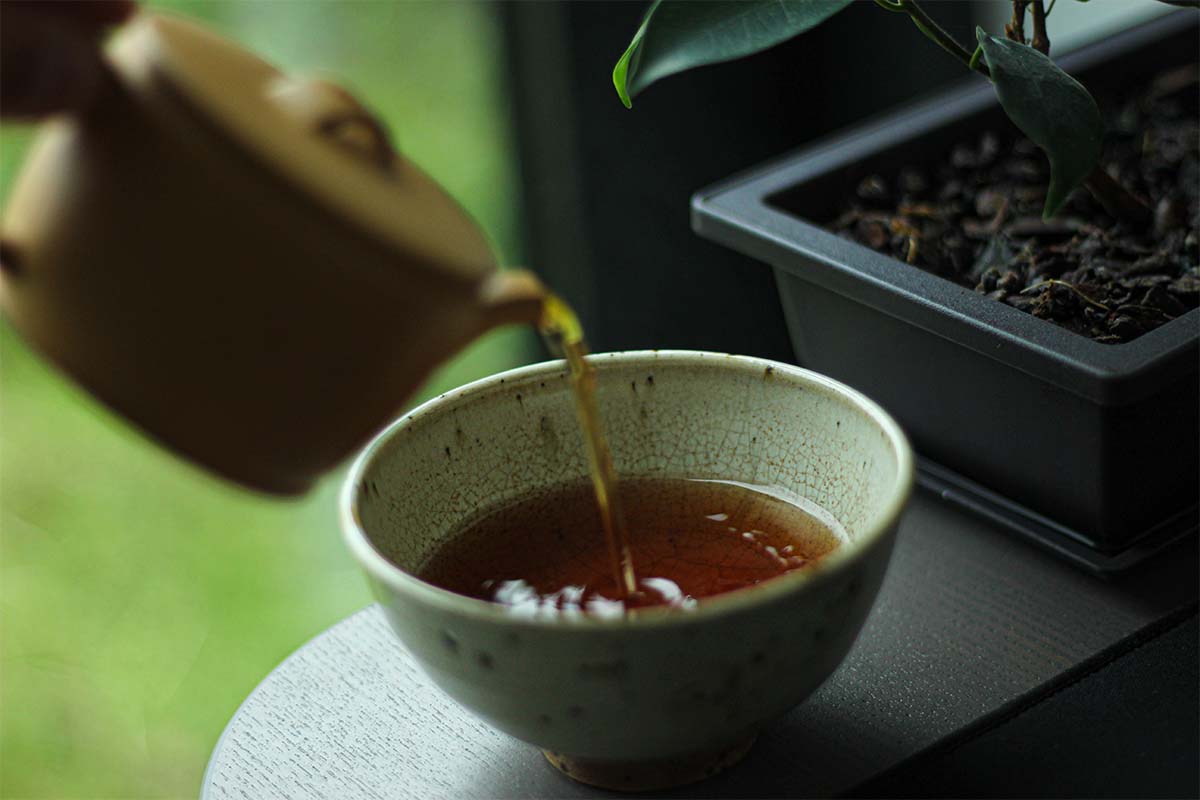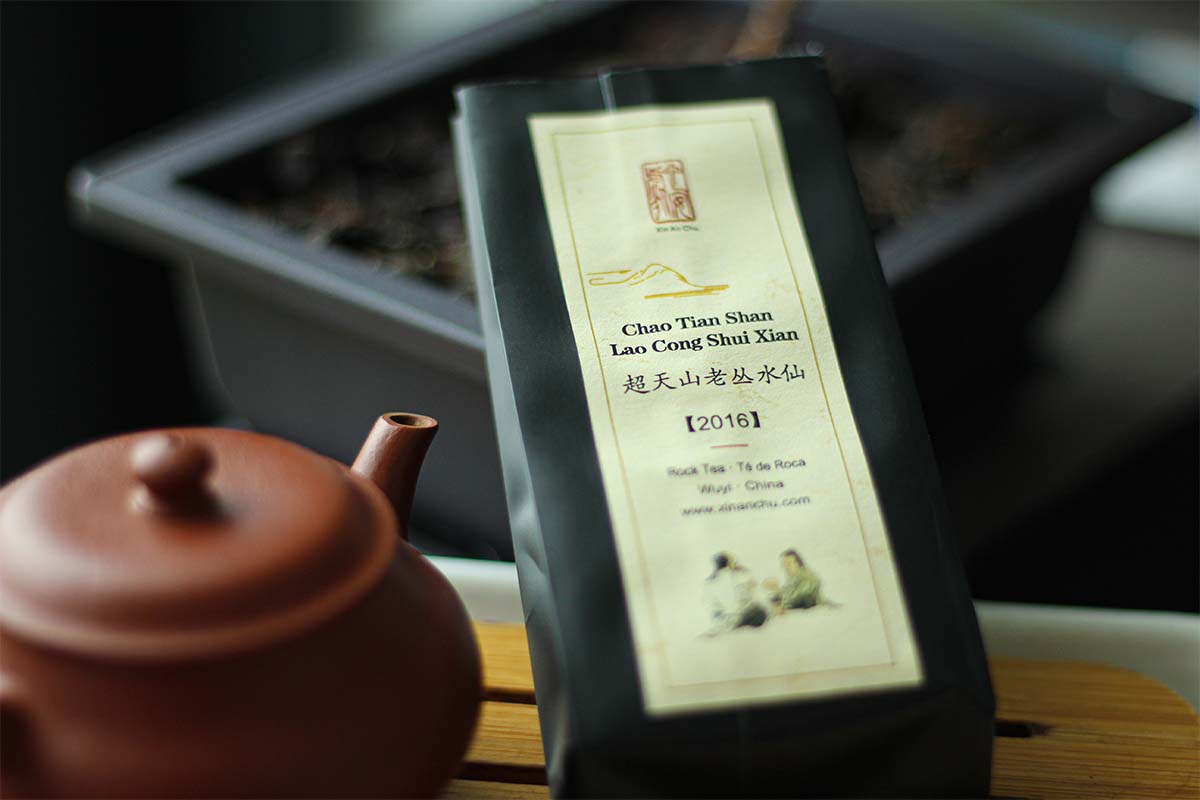Today I wanted to revisit a tea I drank a while ago. I was really impressed by Moychay’s Yongde Ye Sheng Hong Cha when I last drank it, so I wanted to write a blog post about it. While I was drinking this tea, there was a thunderstorm going on. This added something else to the session. I cannot really explain what it was, but you know if you have already experienced something like this. If you know, you know.
Have you considered subscribing to Tea Adventures? You can enter your email address in the sidebar and get updates whenever I publish a new article. You never have to miss an article again by joining our mailing list.
Yongde Ye Sheng Hong Cha
The 2019 Yongde Ye Sheng Hong Cha is, as you can tell from its name, a hong cha (red/black tea). It comes from Yongde County in Yunnan province and they used the first spring shoots of wild trees to make this tea. Unfortunately, it’s sold out and due to the whole lockdown situation, there is no 2020 version yet.
The dry leaves are black, twisted and medium-sized. The aroma consists of a very intense sweetness. I have never smelled a tea with a sweetness this intense. It’s definitely candy in combination with exotic fruits and berries.
The aroma of the wet leaves is still sweet, but it has a freshness to it now. After the session, the leaves have a dark brown colour with a reddish hue and are medium-sized. It’s noteworthy that these leaves are really pretty!
Tea Tasting
- Water 95°C
- 5g for a 150ml Zisha teapot
- 1 rinse
- 6 infusions
Infusion 1 (15 sec): the infusion has a beautiful golden colour and the aroma is definitely what I got while smelling the dry leaves. It’s exactly as I remember; a candy sweetness that changes into exotic fruits. It reminds me of eating a popsicle on a hot summer day. This sweetness gently floats through the finish into the aftertaste. Very pleasant experience.
Infusion 2 (20 sec): not really noticing major changes, although the sweetness is less intense. It still carries through into the aftertaste. Towards the end, there is a maltiness that is also starting to show itself. No maltiness in aftertaste because it’s sweet all the way.
Infusion 3 (25 sec): the maltiness is a bit more noticeable and the sweetness is still dominant. Usually, I’m not a big fan of malty flavours, but it adds some complexity to this one. If it was only the candy sweetness, I think you would get bored of the taste pretty easily. It’s a nice combination because every sip is a surprise.
Infusion 4 (30 sec): no maltiness during this one, only a subtle sweetness. It’s less like candy and more like berries. It’s sweet, but with a sour edge to it. Nothing major, only a slight touch. The aftertaste does still have that candy sweetness, though.
Infusion 5 (40 sec): the maltiness is more prominent and I’m also getting some light hints of dry wood. Not really getting much sweetness during the infusion, but I’m still feeling it in the finish and aftertaste.
Infusion 6 (long): this is the final infusion because the leaves are spent. No more sweetness and only a light maltiness. Even after this one, I’m still getting a sweetness in the aftertaste.
Don’t know where to buy tea online? I made a page on the website with over 200 online shops and I keep updating it regularly. You can check it over here.
Conclusion
This tea is definitely in my top-3 hong cha of all time! The sweetness was so intense during the first infusions and then slowly diminished. However, it was always present in the aftertaste. The candy sweetness was on another level. I’m pretty sure I have never had a tea this sweet before. I got candy, exotic fruits, malty flavours and even a hint of dry wood. I had fun and experienced amazing flavours so this is a clear winner!




